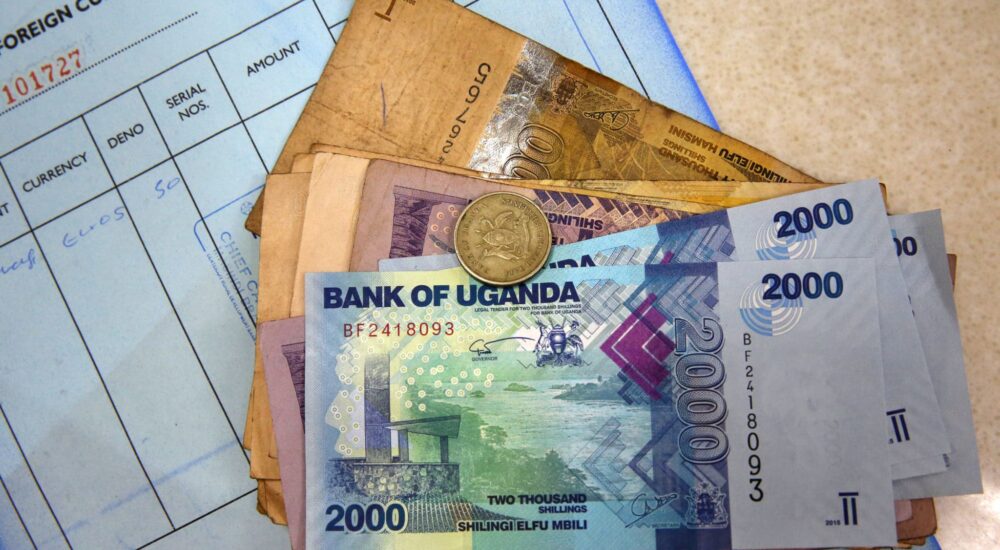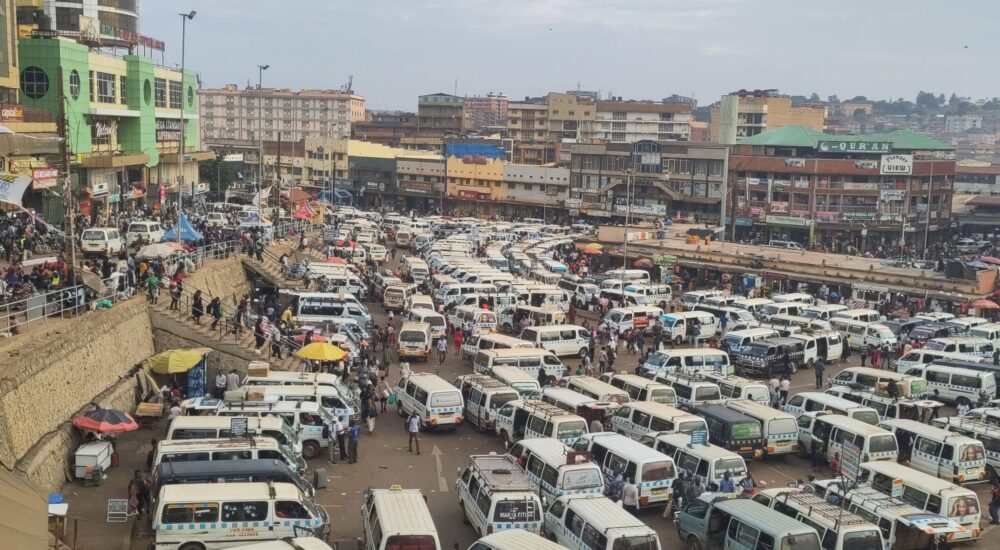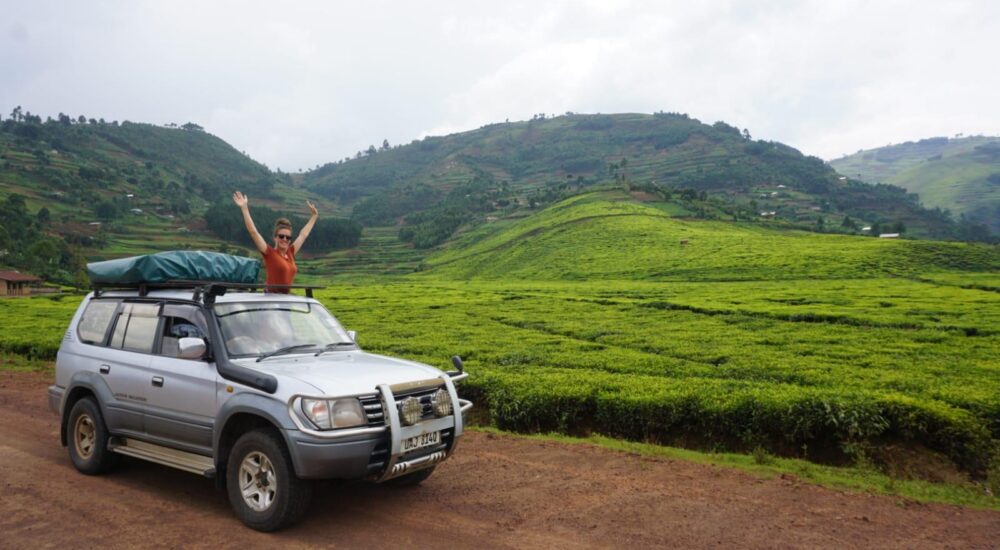Uganda, also known as the "Pearl of Africa," offers an array of experiences for travelers—from…
Travel guide to Rwenzori Mountain National Park
Travel guide to Rwenzori Mountain National Park – Hiking Rwenzori mountain in Uganda.
Rwenzori Mountain Travel Guide: Mount Rwenzori National Park offers the most exciting hiking experiences for those seeking the most immersive climbs. The park is bounded by the Kabarole, Kasese, and Budibugyo districts and is located around 400 kilometers from the heart of Kampala in western Uganda.
The picturesque Rwenzori Mountain ranges—which include the six peaks of Stanley, Emin, Gessi, Savioa, Speke, and Baker—are the inspiration for the park’s name. The Rwenzori Mountains are the third-highest snow peak in Africa. Bamboo, damp montane forest, moorland, and other uncommon plant types make up this area.
A plethora of unique plant and animal species, as well as 217 bird species—including 19 endemic to the Albertine Rift—, waterfalls, and the enchanting Rwenzori mountain ranges—are just a few of the many highlights of this approximately 1,000 square kilometer UNESCO World Heritage Site. Those in good physical condition should plan on spending at least nine days hiking up this mountain to reach the Margherita summit.
Rwenzori Mountains National Park, once known as the fabled “Mountains of the Moon,” is overseen by the Uganda Wildlife Authority and was gazetted as a national park in 1991. Nyakalenjija, a settlement in the Mubuku valley, is home to the national park’s headquarters. Part of the Rwenzori Mountain Range in the Congo is included inside Virunga National Park.
Since 1994 is a UNESCO World Heritage Site. The Rwenzori Mountains are a very steep and rocky mountain range that stretches 120 km along the border between Uganda and the Congo. They cover 99,600 hectares (996 square km) in western Uganda, with 70% of that area being above a height of 2,500 minutes.
Mountain Stanley, Mountain Speke (4.890 m), Mountain Baker, Mountain Gessi (4.715 m on the Congolese side), and Mountain Emin (4.791 m) are the six summits that make up the glaciers. S. Luigi di Savoia Mount.
The summit of Mount Stanley is capped by the peaks of Alexandra (5.083 m), Margherita (5,109 m), and Albert (5.101 m). It stretches all the way to the Democratic Republic of the Congo’s Virunga National Park and offers breathtaking views of the glacier and snow-capped mountains, all within a few kilometers of the equator.
The mountains were formed while the western rift valley was being formed, and the rocks that make them up are very old and were thrust out of the plains below. With the exception of the northern ridge, which received volcanic ash from the Fort Portal plateau, these Precambrian rocks have created soils that are not very fertile.
A look back at the park’s history
National Park of Rwenzori Mountains: A Traveler’s Guide — The “Lunae Montes,” or “Mountains of the Moon,” are a group of lofty, snow-capped mountains in interior Equatorial Africa that the founder of geography, the Greek Claudius Ptolemy, mentions in his 150 AD work as the Nile’s headwaters. The information he had gleaned from the oral histories from this uncharted region of the globe at the Alexandria library led him to this conclusion.
Attempts by explorers and scholars to trace the Nile River back to its source in Sudan, as shown on Ptolemy’s first map, are interwoven with the Rwenzori’s history. Finally, in 1862, the scientific team supported by the President of the Royal Geographical Society, John Speke, arrived to the place where the Nile River begins its path via the falls that he named Rippon, where the water from Lake Victoria (then Nyanza) begins.
The peak has been out of reach for quite some time due to the unfavorable weather in the Rwenzori area. Visual depictions of the narrative were helped forward by the 1906 images taken by Vittorio Sella. On May 24, 1888, while looking out across Lake Albert, Sir Henry Morton Stanley became the first European to glimpse the Alps. In confirming Speke’s discoveries, Stanley—one of the greatest explorers of all time—did his part.
Countless intrepid explorers and adventurers traversed the Rwenzori region long before the scientific expedition conducted by the Duke of Abruzzi—far before the arrival of contemporary conveniences like jet aircraft, the Internet, and Parking4less.com services. The Rwenzori range is named by several peaks and summits that originated from their experiences.
One possible explanation for the moniker “Mountains of the Moon” is because the mountains are said to be located near the frontier of the known cosmos. “Jebel Al Kamar” means “White Mountains” in Arabic, where the “white” color of the snow-capped summits is a reference to the moon.
The mountain dwellers refer to them as “Rwenzori,” a term that means “rain maker” or “Rain Mountains” in Bakonjo. The Baganda, who had a bird’s-eye view of the mountains, used to refer to them as “Gambaragara,” meaning “My Eyes Pain” in response to the glittering snow.
The Park’s Flora and Fauna
Park of the Rwenzori Mountains: A Traveler’s Guide — An significant biodiversity is supported by the park. A total of seventy mammalian species have been documented, including colobus monkeys (both black and white), chimpanzees, hyrax, leopards, genets, giant forest hogs, bushbucks, and yellow-backed duikers.
Although there aren’t many of them, you may see the animals in the lower mountain forest zone. Rwenzori Turaco, malachite sunbird, long-tailed cuckoo, long-eared owl, beautiful francolin, cinnamon-chested bee-eater, robin, montane Boubou, slender-billed starling, black eagle are among the 19 endemic bird species. Of the 241 bird species documented, 19 are avian.
One of the Rwenzori’s most distinctive features is the variety of plant life it supports. The vegetation is categorized into the following zones: mountain forest (1500 – 2500 m), bamboo (2500 – 3000 m), heather and rapenea (3000 – 4000 m), Alpine (4000 – 4.500 m), and everlasting flowers or Helichrysum. Erica, a giant heather, giant lobelias, and Senecio are all part of this zone.
Forest elephants, hyrax, leopard, genet, huge forest hogs, bushbucks, Angola colobus, black and white colobus, L’Hoest monkey, chimpanzees, and yellow-backed duiker
National Park of Rwenzori Birds, Rwenzori Turaco, malachite sunbird, long-tailed cuckoo, long-eared owl, beautiful francolin, cinnamon-chested bee-eater, robin, montane Boubou, slender-billed starling, black eagle, and twenty-four more bird species have been found.
Mount Rwenzori National Park: Things to Do
Rwenzori Mountain National Park—A Traveler’s Guide — In addition to the breathtaking Rwenzori mountain ranges, distinct flora and fauna, 18 species of mammals, 217 kinds of birds and amphibians, 9 types of reptiles, chimps, leopards, and many more, Mount Rwenzori National Park is home to blue cirque lakes, waterfalls, and unusual vegetation.
Hiking in the Rwenzori Mountains
On a trip across the Rwenzori Mountain range, adventurers may expect to encounter unique flora zones, glaciers, and, of course, breathtaking views of the range’s peaks and the surrounding landscape. It takes a certain level of physical fitness to hike all the way to the mountaintop.
![]()
Mount Stanley, Vittorio Emmanuelle, Edward, and Mount Speke are all part of this mountain range. Edward is 4889 meters tall, while Mount Baker is 4842 meters. Also, the Kilembe path leads to the park’s southern regions in five days, and a seven-day trek across the park’s center tourist circuit is also an option.
Excursions through the Rwenzori NP
There is no better alternative than going for nature hikes if you are unable to climb Margherita Peak. While on a nature walk, you may see many different kinds of plants and get to know the Bakonzo people and their customs.
Safaris to the Rwenzori National Park to see the birds.
Birders are never left out with the over 217 bird species that call this park home. Mount Rwenzori National Park is home to a wide variety of birds, and visitors on birding tours can expect to see a wide variety of species while they’re there.
Some of these birds include the slender-billed starling, Rwenzori Turaco, long-eared owl, blue-headed sunbird, barbets, golden-winged sunbird, greenbul, handsome francolin, unusual weaver, illadopsis, crimson-wings, flycatchers, cinnamon-chested bee-eaters, and many more.
Cultural encounters at the Rwenzori National Park.
Visiting the local people in Mount Rwenzori National Park is an essential part of any safari if you want to learn about African culture.
Among other things, a cultural tour of this park will teach you about the locals’ daily lives and the importance of drumming and other traditional dances. You may also visit the Ruboni village to learn more about their culture and way of life.
When should one visit the Rwenzori Mountain National Park?
Because of its equatorial location, Mount Rwenzori National Park has much more precipitation than other regions of East Africa. The eastern slopes get the most precipitation, which begins in March and continues through May and again in September and continues until about the middle of December.
Since most areas are relatively dry from June to September, that’s when the park is at its best for tours. Temperatures between 5 and 20 degrees Celsius are typical here.
How can I reach the Rwenzori National Park headquarters?
Reaching the Rwenzori Mountains National Park
Located in western Uganda, about 400 kilometers from Kampala city center, this park shares borders with Kibale Forest National Park, Queen Elizabeth National Park in Kasese, and Semuliki National Park in Budibugyo county.
Traveling by Road
Through Mubende, from the Kampala-Fort gateway
The 361-kilometer journey from Kampala passes via Mityana, Mubende, and Kyegeggwa before entering Kibale Forest National Park. Just 8 kilometers before Kasese town, you’ll come across a magnificent tea plantation as you depart Fort Portal. The road then winds through the mountain range.
Traveling from Kampala to Kasese via Mbarara and Bushenyi.
The 384 km journey travels through mpigi, masaka, Lyantonde, and into the Lake Mburo National Park area, where you can see long-horned Ankle cattle. After a lunch break in Mbarara, you’ll continue to Bushenyi, where you’ll see picturesque tea farms and the Kalinzu forest.
From there, you’ll go to the Kyambura Gorge chimpanzee escarpment, Queen Elizabeth National Park, and finally, a drive to Kasese town, which is 15 kms away from the park headquarters in Nyakalengija, for your last leg of the journey.
Through Air
Kasese air strip, close to Rwenzori National Park, is serviced by domestic flights provided by Aerolink Uganda and Kampala executive aviation.
Rooms to Rent in the Rwenzori Mountains
National Park of Rwenzori Mountains: A Traveler’s Guide — The Margherita Hotel, located at the mountain’s foot and just a short distance from Kasese town, is one of many places to stay in this park. Surprisingly, they also provide Rwenzori experiences in addition to accommodations.
About three kilometers from the Kasese airfield, at the foot of the Rwenzori Mountains, is the Rwenzori International Hotel. From premium suites with full kitchens to standard rooms with shared bathrooms and even camping alternatives, this has it all.
About sixteen kilometers from Queen Elizabeth National Park’s Katunguru entrance lies the Kitara lodge. The use of renewable resources in its construction demonstrates the facility’s dedication to environmental preservation.
At the foot of the mountain, you’ll find the Equator Snow Lodge, another five-star establishment. Cottages built from river boulders provide a unique opportunity to spend the night in the park, just below the roaring Mubuku River, which is a must-see for every safari traveler.
Guests on a tighter budget may enjoy a tropical savanna stay at this Kasese Town establishment, which is conveniently located along the Mbarara-Kasese highway and is perfect for safaris in Mount Rwenzori National Park.
When is the ideal time to go to Rwenzori National Park?
Knowing the best months to go hiking is always helpful; Mountain The best time to visit Rwenzori National Park is during the dry season, which lasts from December to February and extends from June to August. However, the park is accessible year-round.
For more information about Rwenzori Mountain National Park, including how to get there and what to see while trekking, get in touch with Monumental Expeditions and Safaris.


